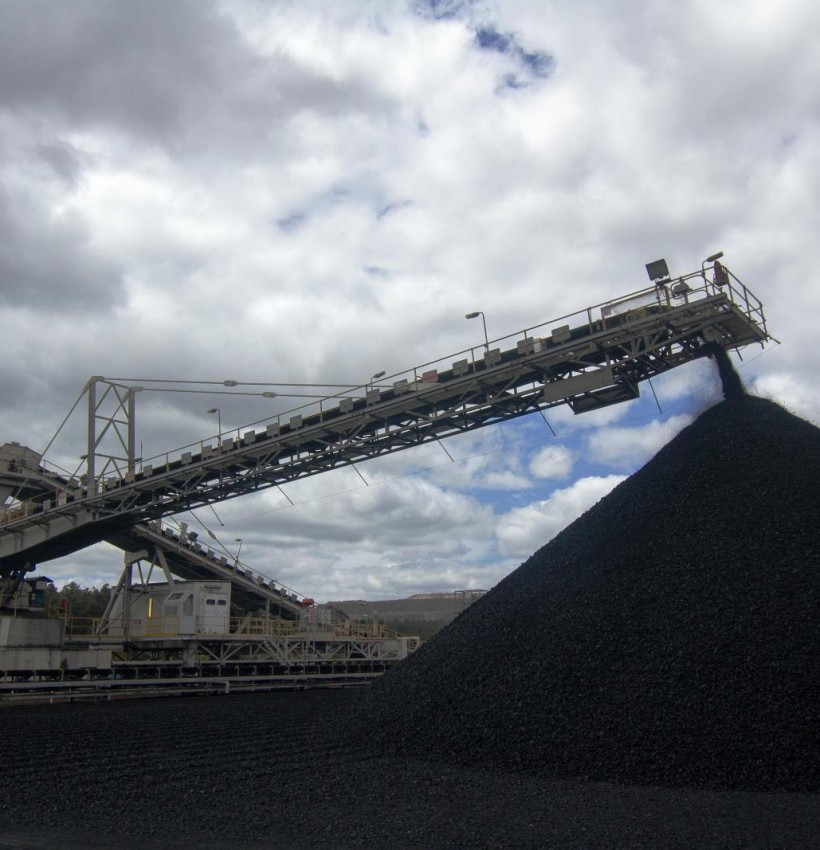The high quality of Premier coal allows for a simple preparation process of crushing and screening. The system has a capacity of 1,200 tonnes per hour. Coal is typically crushed to a nominal top size of 50mm and screened “nut” products can be produced to suit customer needs. Premier’s modern stacker-reclaimer system produces a highly uniform quality. Online analysis, supported by automatic sampling and laboratory analysis, ensures stock piles are built accurately to customer specification.
Coal is supplied to Synergy's generating plant by conveyor. The Company has good rail and road access to other customers in Western Australia.
Premier Mine produces a clean coal with low ash and sulphur content such that it does not need to be washed and requires only crushing, sizing and blending prior to use.
The coal handling equipment installed at the Premier Mine is very effective. The system has been designed to supply coal in a very consistent way so that there are no variations in quality.
The coal handling plant consists of a crusher, screening plant, stockpile stacker, reclaimer and delivering system for our customers – either by conveyor, rail or truck.
The coal is delivered to the plant in large rear dump trucks. These dump their load of 130 tonnes into a 500-tonne capacity bin. The coal is conveyed from the bin at 1,200 tonnes per hour on an apron feeder through a primary crusher where it is sized to less than 200mm.
The coal is then conveyed to a screen where it is sized to either less than or more than 50mm. The more than 50mm product stream goes to a secondary crusher to be crushed to under 50mm. After crushing, the coal is conveyed to a transfer station where it is sampled by automatic sampler. This sample is reduced in mass from the initial 165 kg by crushing and secondary sampling. The sample not required for analysis is returned to the product conveyor. The sample is collected and analysed every two hours.
The sized product is delivered onto a longitudinal stockpile in thin layers by a rail-mounted, luffing system which stacks the coal in a chevron pattern. This stacking system ensures a homogeneous product that will exhibit the same quality over the total 60,000 tonnes of the pile capacity. The stockpile area is designed for two stockpiles of this size, one being stacked while the other is being reclaimed for delivery.
The coal is reclaimed using a transverse-mounted, bridge-type, scraper reclaimer. This reclaimer effectively rakes the pile in thin slices as it reclaims. It is the combination of this stacking and reclaiming process that produces a consistent, blended product. Operationally, this means that the customer will not experience variations in coal properties which would, for example, require changes to coal feed rates to the power station.
The reclaimed coal can be delivered to any of three destinations; the Collie ‘A’ power station conveyor, the Muja power station conveyor or the train and truck loadout bin. A 1200–tonne train can be loaded in one hour.
Coal product quality is carefully monitored as it is being stacked. An on-line ash analyser continuously monitors ash content. As well, physical samples are taken, for every 2,500 tonnes, via an inbound sample plant and then sent for independent laboratory analysis. These analyses are more comprehensive and include ash, moisture, specific energy and sulphur. These parameters are used to update the quality of the current stockpile build so that adjustments to the stockpile coal feed can be made if necessary.
The delivered coal is also sampled, this time for contractual purposes. The two power station conveyors have samplers installed and are owned and operated by Synergy. Each train load of coal is sampled when the train load-out bin is being filled via the outbound sample plant. An independent laboratory also analyses these samples.
The inbound and outbound sample plants have similar operation. The plants consist of a primary cutter, crusher and secondary cutter. The inbound primary cutter takes approximately 0.3% of throughput. The less than 50mm coal feed is reduced to less than 10mm in the crushers. The secondary cutters deliver a small quantity of less than 10mm coal to either a rotary sample divider or sample bucket carousel for sample collection. After this sampling procedure, 15-20kg of crushed coal, per 2,500 tonnes of product, is sent to the laboratory for analysis.



